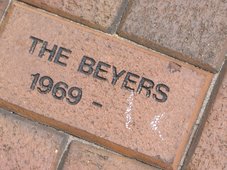Wednesday, January 6, 2010
Chesapeake Bay Fail
The start of a new decade is always a time to take measure of what we've accomplished -- or not. WaPo's David Fahrenthold offered this observation about efforts to clean the Chesapeake Bay:
On Tuesday morning, it became official that the government-led cleanup of the Chesapeake Bay had missed its grandest, most ambitious deadline. In 2000, state and federal leaders had agreed to solve the Chesapeake's pollution problems "by 2010."
Here it was, 2010, and efforts to reduce bay pollution from manure, fertilizer and sewage were more than 40 percent short of their goals.
But as the governors of Virginia and Maryland and the head of the U.S. Environmental Protection Agency met for a summit on the Chesapeake, none of them even mentioned the shortfall. Instead, they made a new pledge.
This time, we're serious.
How far do we have to go?
EPA statistics show that states have taken measures that will achieve just 58 percent of the promised reduction in phosphorus and nitrogen, the bay's most troublesome pollutants, which are found in treated sewage, farm manure, septic leaks and lawn fertilizer. Even if the deadline was meant to be the end of 2010, the states won't come close.
On Tuesday morning, it became official that the government-led cleanup of the Chesapeake Bay had missed its grandest, most ambitious deadline. In 2000, state and federal leaders had agreed to solve the Chesapeake's pollution problems "by 2010."
Here it was, 2010, and efforts to reduce bay pollution from manure, fertilizer and sewage were more than 40 percent short of their goals.
But as the governors of Virginia and Maryland and the head of the U.S. Environmental Protection Agency met for a summit on the Chesapeake, none of them even mentioned the shortfall. Instead, they made a new pledge.
This time, we're serious.
How far do we have to go?
EPA statistics show that states have taken measures that will achieve just 58 percent of the promised reduction in phosphorus and nitrogen, the bay's most troublesome pollutants, which are found in treated sewage, farm manure, septic leaks and lawn fertilizer. Even if the deadline was meant to be the end of 2010, the states won't come close.
Subscribe to:
Post Comments (Atom)





No comments:
Post a Comment